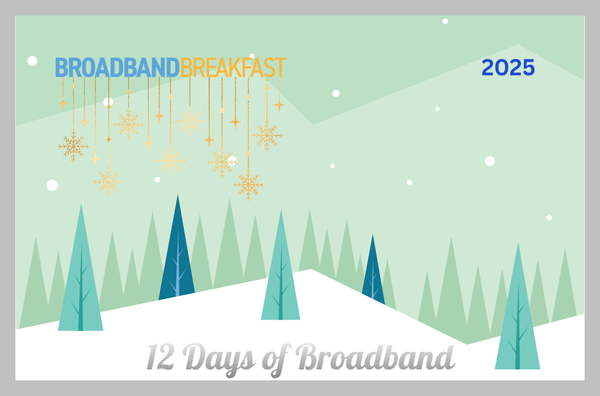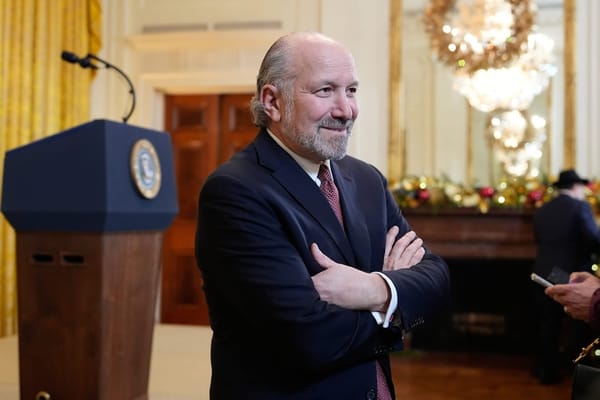Would Trump Put BEAD on Hold? Unlikely, Experts Say
Some states are already fielding grant applications under the current rules.
Jake Neenan

WASHINGTON, Oct. 1, 2024 – Republican complaints about various provisions of the Biden administration’s flagship broadband expansion program are well known. Even if Donald Trump takes office next year, experts said it’s probably too late to institute many of the desired changes sought by Republicans.
Some GOP members of Congress and the Federal Communications Commission have blasted the $42.5 billion Broadband Equity, Access, and Deployment program for various requirements, including climate resilience, fair labor practices, and even the program’s preference for fiber-optic cable.
In line with National Telecommunications and Information Administration rules, states evaluated the risks climate change and extreme weather could have on broadband deployment in the plans they submitted to the agency in December.
The actual requirements for applicants vary from state to state, from a written plan for mitigating the effects of storms in Delaware to extra points for buried fiber projects in flood-prone Louisiana.
Federal labor laws
The Infrastructure Act set out a record of compliance with federal labor laws as a priority for projects, and grant applicants across the board will have to provide those records for themselves and any contractors they plan to use, which factors into how applications are scored.
Some states give extra points for things like union neutrality and prevailing wages, something encouraged but not required by the NTIA.
The preference for fiber, more expensive but more future-proof than wireless broadband, was set out by the NTIA. States can look to award grants for non-fiber builds if a fiber project would cost more than a certain threshold, which states will set themselves after reviewing applications, or if no fiber applications come in for a certain location.
Most states will have to do this in some capacity. The Infrastructure Act requires states to fund projects connecting every home and business without adequate broadband and states with more remote locations likely won’t have enough cash to lay fiber everywhere.
Project selection and one-year shot clock
The problem with changing provisions like these is that they directly affect how grant applications are scored and ultimately selected, a process that’s already happening in some states and would be further along by the time a new NTIA chief was sworn in, said Kathryn de Wit, director of Pew Charitable Trust’s broadband access initiative.
All but seven states have had the second volume of their BEAD plan approved by the NTIA, with the first coming in December 2023. That approval sets off a one-year shot clock, in which time a state must solicit grant applications, make their selections, and submit a final list to the NTIA for approval. Having finalized lists of projects under review might dissuade a new NTIA to make changes to how those projects are selected, de Wit said.
“We know that labor costs have a significant impact on the overall cost of a deployment project. So if changes are made around how labor should or should not be considered in the scope of the decision making, but some states have already made those decisions, well, you can see where there might be a little frustration on the parts of states, labor, and ISPs around consistency of guidelines,” she said.
Lengthy back-and-forths with the NTIA
There’s also the timing to consider. BEAD was set up in 2021 and projects have yet to be funded, something Republicans are quick to point out. Much of that time was spent crafting more accurate broadband coverage maps at the Federal Communications Commission, finished in May 2023, plus another three-to-four month process in which states field local challenges to that data.
But BEAD is also just more deliberative than previous funding programs – states have spent the last year doing community outreach and crafting detailed long-term plans that the NTIA is still signing off on.
Some states have been caught up in lengthy back-and-forths with the agency over those implementation plans and post-challenge coverage data, and a new administration might be hesitant to hold up the program even more, said Blair Levin, senior analyst at New Street Research and former FCC chief of staff.
“You could say, I suppose, ‘Well, let’s get rid of all the requirements relating to pricing and labor and everything else,’ but that would take a bunch of time,” Levin said. “And what you want is for the states who have their plans to proceed as quickly as possible with those plans. They could slow it down, but why would they want to do that?”
Another major sticking point for the GOP is the program’s low-cost plan requirement. A cheaper plan of some kind for low-income households served by BEAD is required by the Infrastructure Act, and the NTIA has asked states to set out a specific price or range of prices.
Republicans say this amounts to rate regulation, something the same law prohibits, and ISPs have been pushing the NTIA to relax its policy, saying prices too far below market rates would make serving the sparsely populated areas targeted by BEAD unworkable.
The agency has approved state plans including those low-cost prices, but Jonathan Cannon, policy counsel at R Street Institute said it’s not unthinkable a Republican or even Democratic NTIA might issue a waiver on the rule. The agency has walked back some BEAD policies after sufficient industry pushback, including rules regarding the letter of credit requirement for financing and “Buy America” manufacturing requirements.
“We don’t want price controls, but we want to incentivize providers to offer a low-cost plan to eligible consumers,” Cannon said. “I think there’s a huge opportunity there to figure out creative solutions.”










Member discussion